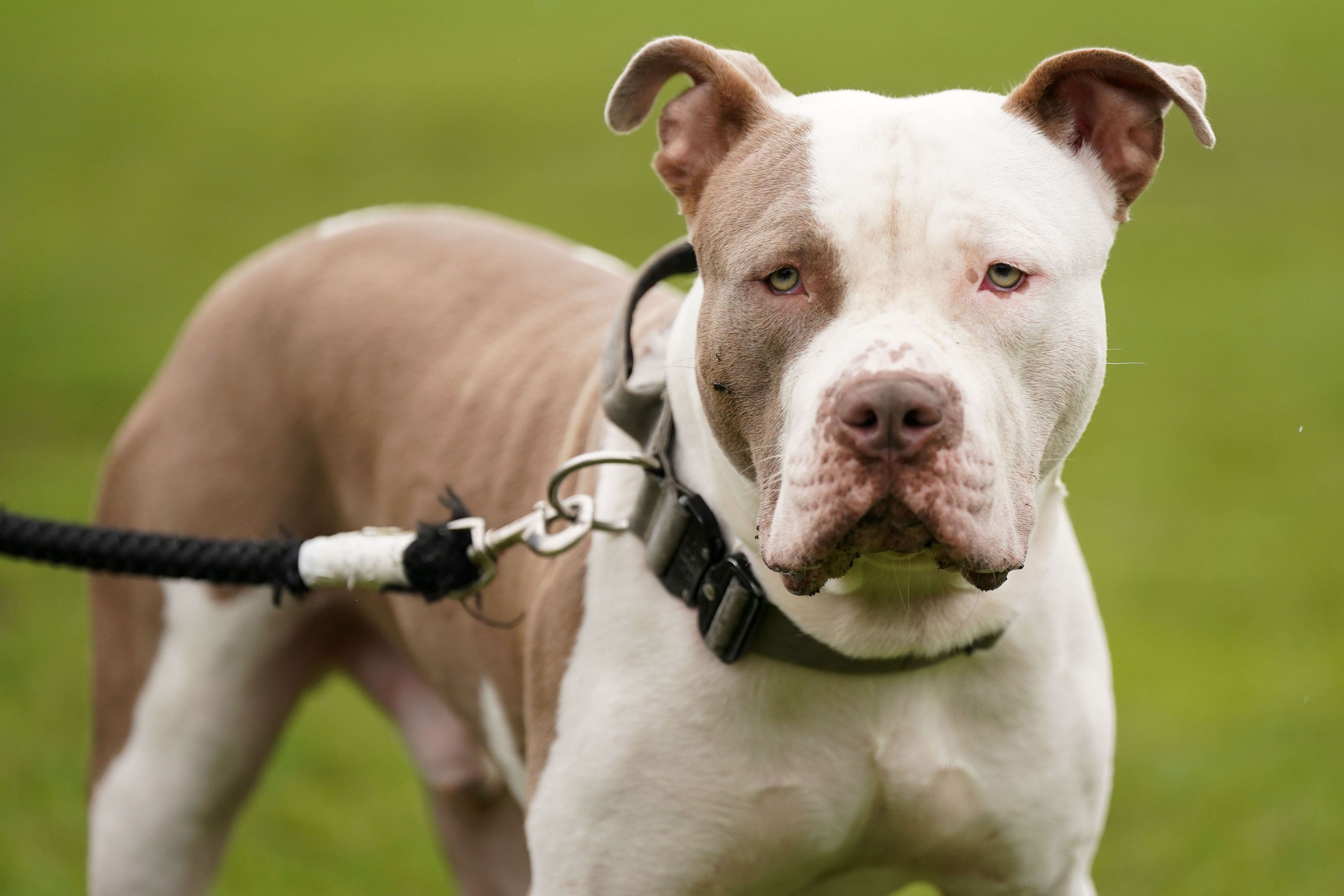Campaigners get green light to bring High Court challenge against XL bully ban
The Government is facing accusations that its recently introduced ban on the large bulldog-type American breed is unlawful.

Campaigners have been given the green light to bring a High Court challenge against the Government’s decision to ban XL bully dogs.
XL bully owner Sophie Coulthard, 40, and campaign group Don’t Ban Me, Licence Me (DBMLM) are taking legal action against the Department for Environment and Rural Affairs (Defra) over the large bulldog-type American breed being added to a banned list under Dangerous Dogs Act in October last year.
Since February, it has been a criminal offence to own an XL bully dog in England and Wales without an exemption certificate, meaning unregistered pets will be taken and owners possibly fined and prosecuted.
The Government move to ban XL bullies followed a series of attacks on people.
But campaigners argue that the ban is unlawful and irrational, claiming it was based on “unreliable” material, lacked a “proper” analysis over its impact and includes “vague” standards that risked people unknowingly committing a criminal offence.
Government lawyers say the legal challenge should be dismissed and that campaigners’ arguments are “meritless”.
At a hearing in London on Wednesday, judge Mrs Justice Dias said campaigners had an “arguable” case in certain areas, granting permission for the challenge to proceed to a trial at a later date.
Cathryn McGahey KC, representing campaigners, said the ban came from a “hasty” announcement by Prime Minister Rishi Sunak in September last year, the day after a fatal dog attack, which led to legal errors.
In written arguments, the barrister said Defra has “no material on which to base a rational decision that dogs involved in recent attacks were disproportionately of XL bully type”.
For many dog owners, a criminal conviction may be career-ending, losing to the loss of employment and ultimately their home
She said the Government estimated there were 10,000 XL bullies in the UK, but 57,301 have been registered.
Ms McGahey said there was no analysis of the numbers of other dog types involved in fatal attacks, adding: “If five XL bullies have been involved in fatal attacks out of a population of 50,000, and one German shepherd dog out of a population of 10,000, then XL bullies are no more dangerous than German shepherds.”
“Before seeking to impose a ban, the defendant should have conducted proper research into the types of dogs in fact involved in serious attacks,” the lawyer said.
Restrictions on owners, which include keeping dogs on a lead and muzzled in public, would not stop attacks as the “vast majority” took place in homes or on private property, the court was told.
Ms McGahey claimed the Government had done no work to determine whether “those with mental health conditions would be particularly adversely affected, or whether children with autism or other medical conditions who relied on their dogs would suffer a detriment”.
She said XL bullies, while not recognised as a breed by the UK Kennel Club, were recognised in the US, adding the Government was wrong to decide it has the characteristics of a dog bred for fighting.
“No-one ever appears to have been prosecuted for using an XL bully as a fighting dog,” the judge was told.
It was “impossible” for owners to tell whether their dog was a banned type or not due to the “unlawful vagueness” of the Government’s XL bully standard, the barrister said.
“For many dog owners, a criminal conviction may be career-ending, losing to the loss of employment and ultimately their home,” Ms McGahey added.
Ned Westaway, for Defra, said it had been “rational” to conclude that XL bullies had the characteristics of fighting dogs due to their connection to pitbull terriers.
He said the Government’s XL bully standard had been “carefully and sensibly thought about” and was not unlawful.
He said an assessment found there was no “particular or disproportionate” impact on certain groups of people, with there being “no reason to think the issue of impact was not conscientiously considered”.
In written arguments, Mr Westaway said ministers were aware the number of XL bullies could be higher than 10,000, adding: “Even if the number is substantially greater than 0.1% of the UK dog population, XL bully type dogs would still have been responsible for a disproportionate, and concerning, number of dog attacks since 2020”.
He said the conclusion that the dog type are “disproportionately responsible for recent dog attack fatalities” did not depend on population size, arguing it was not practicable to compare it against other types.
Mr Westaway said that “evidence of a larger population would have made the decision more, not less, likely.”
Ms Coulthard, a director of DBMLM from Wandsworth, who owns Billy the XL bully, said she was “elated” by the judge’s decision, which “feels like a victory for responsible dog owners”.
She said the campaign group, which has crowdfunded its legal challenge, agreed something needed to be done over dangerous dogs and the rise in attacks, but said “alternative solutions” could have been considered.
“We know how passionately people feel that this legislation is unfair, unjust,” she said, adding: “The decision to ban the XL bully was made so quickly, and the fallout and impact on people’s lives, we don’t believe, has been considered.”
